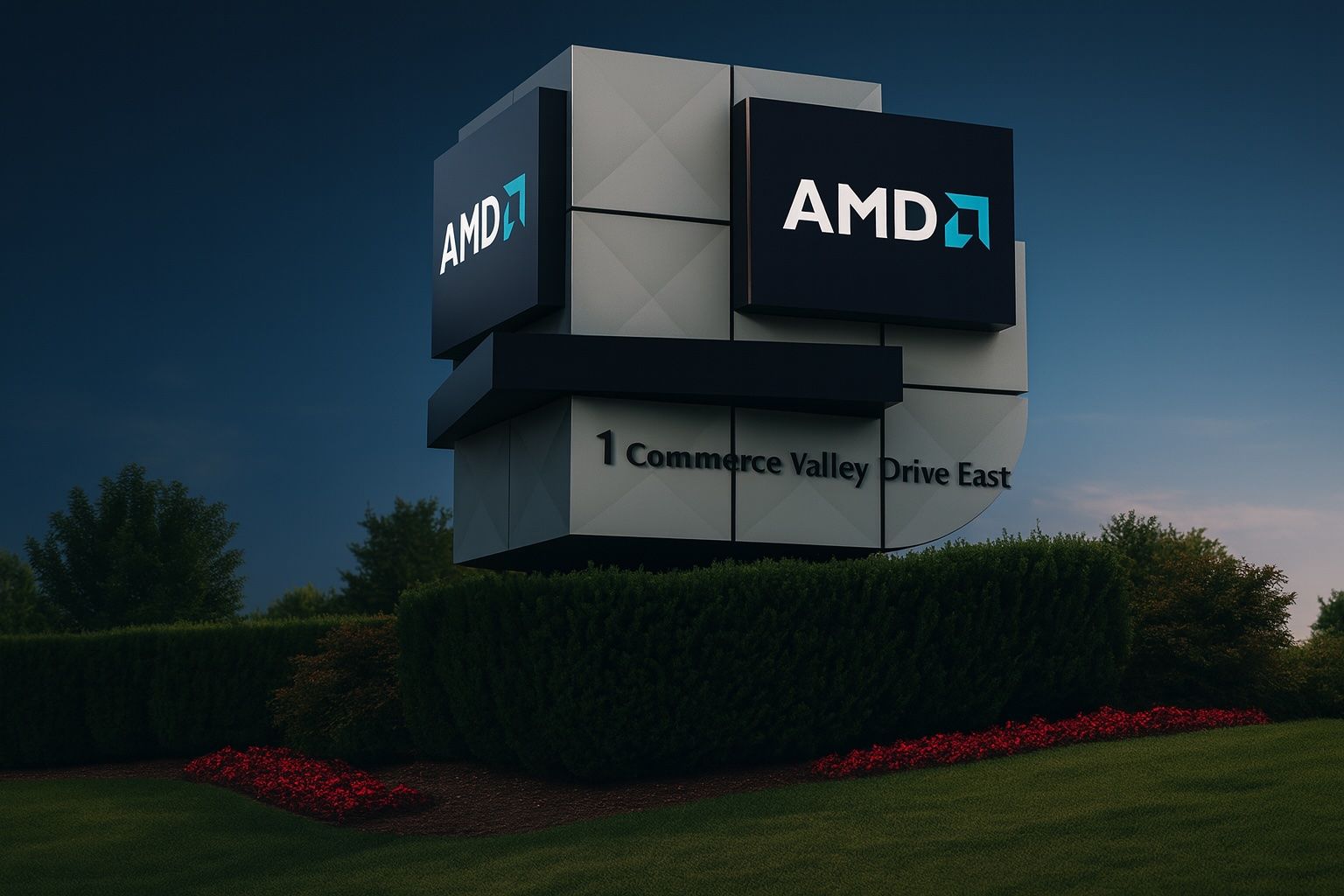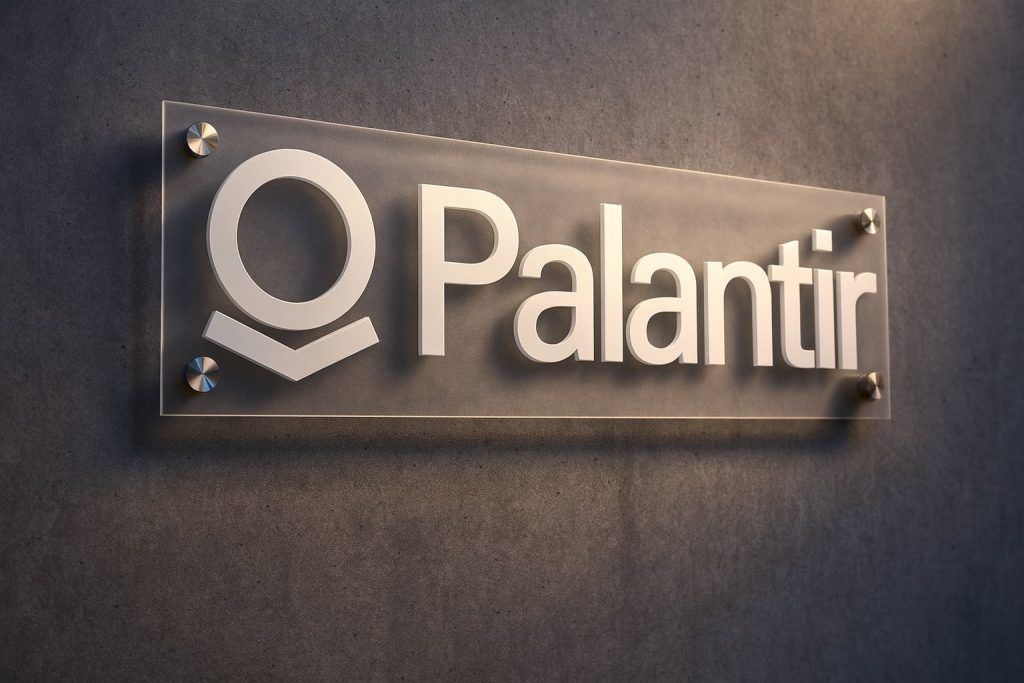- Shares Surge: AMD’s stock climbed to new highs this week, trading around $238–$240 on Oct. 15–16, 2025 [1]. That marks roughly an 80% gain so far in 2025 (versus a ~32% rise for the semiconductor sector) [2].
- AI Partnerships: The rally was powered by two blockbuster AI partnerships. On Oct. 6, AMD announced it will supply 6 gigawatts of custom Instinct GPUs to OpenAI (with equity warrants) [3], and on Oct. 14 it revealed a deal to deploy 50,000 MI450 GPUs in Oracle’s new cloud AI supercluster [4]. The OpenAI pact alone sent AMD shares up ~30% on Oct. 6 [5], adding nearly $80 billion in market value overnight.
- Analyst Optimism: Wall Street has grown bullish. Jefferies and Wolfe Research now peg AMD’s 12‑month target at $300 [6], and HSBC raised its target to $310 [7]. Even Wedbush’s Matt Bryson, typically conservative on chips, noted these AI deals give AMD the “revenue certainty” he’d been waiting for [8]. About 60–65% of analysts rate AMD a Buy [9] under the new outlook, though a few (Goldman, Citi) remain neutral around $210 [10].
- Recent Results: In late July, AMD reported record Q2 2025 sales of $7.69 billion (up 31.7% year-on-year) [11], driven by booming server (EPYC CPU) and client processor demand [12]. EPS of $0.48 slightly missed estimates by $0.06 [13], as massive R&D and an $800M AI-chip inventory build compressed margins. CFO Jean Hu told analysts in October that Q3 revenue is on track for about $8.7 billion [14]. AMD continues to fund expansion (aiming for ~$33B revenue in FY2025 [15]) and will host a Q3 earnings call on Nov. 4.
- Competitive Landscape: NVIDIA still dominates AI GPUs (~90%+ share of data-center accelerators [16]). Intel is re-entering the AI race with its own GPUs (code-named “Crescent Island”) and even took a $5 billion stake in NVIDIA as part of a co‑development deal [17]. Meanwhile, ARM-based chips are gaining ground in servers: ARM projects capturing ~50% of data-center CPU sales by end-2025 [18] thanks to much lower power consumption [19]. AMD is positioning itself as the “open” alternative: its Instinct GPUs and new Helios rack platforms (with EPYC CPUs) support industry-standard interconnects to rival NVIDIA’s closed ecosystem [20] [21].
- Market Factors: Broader tech markets are buoyant on AI enthusiasm – the Nasdaq Composite hit record highs recently [22] – but valuations are rich. AMD now trades at roughly 40× expected 2026 earnings [23] (trailing P/E ~125×), far above historical norms. As one market watcher warned, any slowdown could be painful given how much growth is priced in [24]. Macroeconomic uncertainties (Fed policy, geopolitical tensions) are in the background, but investor focus remains on AMD’s AI momentum [25].
AMD’s exhibition stand at Gamescom 2022. AMD has been aggressively showcasing new AI infrastructure (like the “Helios” rack platform) and forging partnerships across the industry. As a result, AMD stock has raced higher this month – on Oct. 15 it hit a 52-week intraday high of $240.48 and closed around $238.7 [26], up over 8% that day.
In the past week, the catalyst was two major AI deals. On Oct. 6, AMD announced a multi-year agreement with OpenAI: the chipmaker will supply six gigawatts of high-performance Instinct GPUs to OpenAI’s training data centers, and OpenAI received warrants to buy up to 160 million AMD shares at a nominal price [27]. CEO Lisa Su hailed the arrangement as “win-win, enabling the world’s most ambitious AI buildout” [28]. CFO Jean Hu projected it would “deliver tens of billions of dollars in revenue” and be “highly accretive” to earnings [29]. According to AMD, this deal (and related customer agreements) could generate over $100 billion in new revenue over four years [30]. AMD EVP Forrest Norrod told Reuters the pact is “certainly transformative, not just for AMD but for the dynamics of the industry” [31]. OpenAI’s CEO Sam Altman said the chips will allow his team to “build enough AI infrastructure to meet its needs” [32].
AMD’s second AI deal came Oct. 14 with Oracle Cloud Infrastructure: Oracle will deploy 50,000 of AMD’s next-gen MI450 accelerators in a new AI supercluster [33]. The initial phase (72-rack supercluster) begins in late 2026 and will scale in 2027 and beyond. Oracle said the AMD-powered supercluster will deliver “the best price‑performance, open, secure, and scalable cloud foundation” for AI workloads [34]. Even though broader markets fell that day, AMD shares ticked up ~3% premarket on the news [35]. Industry analysts note that Oracle’s announcement — and AMD’s public Helios server designs (shown at Meta’s OCP summit) — put pressure on NVIDIA’s DGX and equivalent systems. As Norrod explained in AMD’s press release, “Open collaboration is key to scaling AI efficiently. With ‘Helios,’ we’re turning open standards into real, deployable systems…” [36]. (In other recent news, AMD and Cohere expanded their AI infrastructure partnership on Sept. 24 [37], and AMD highlighted new chips and collaborations at its June “Advancing AI” event [38] [39].)
Investors and analysts are bullish but watchful. After the deals were announced, virtually every major tech analyst raised their targets. For example, HSBC boosted its 12‑month AMD target to $310 (Buy) [40], and Jefferies now sees $300 [41]. Wolfe Research reiterated an “Outperform” rating with $300 target [42]. Mizuho, UBS and others lifted targets into the $265–$275 range [43]. Even so, the consensus 12-month target remains around $233 (implying ~15% upside) [44]. Wedbush’s Matt Bryson, one of AMD’s longest-term bulls, said the Oracle/OpenAI moves finally give AMD the “revenue certainty” he’d been seeking [45]. Conversely, Leah Bennett of Concurrent Asset Management cautions that AMD still “trailed Nvidia for quite some time,” and that the OpenAI deal mainly “helps validate [AMD’s] technology” [46].
An ARM-based chip powers today’s smartphones and increasingly cloud servers. Arm Holdings expects to capture roughly 50% of global data-center CPU sales by late 2025 [47], capitalizing on dramatically lower power use than Intel or AMD CPUs [48]. This reflects a broad trend toward Arm (and even RISC-V) architectures in some AI applications. AMD faces pressure on multiple fronts: Nvidia still owns ~90% of the discrete AI GPU market [49], Intel is reviving its chip efforts (including an open GPU and a $5 billion NVIDIA investment [50]), and now Arm chips are eating into server workloads [51] [52].
In short, AMD sits at the heart of the AI hardware boom. Its partnerships with OpenAI and Oracle have turned it into a major player in the conversation, and analysts are rewarding the stock accordingly [53] [54]. However, market optimism is high: AMD now trades on the order of 40× expected 2026 earnings [55], well above the broader market. As one strategist put it, investors have priced in “extremely strong AI-driven growth,” leaving “little room for error” [56]. Going forward, AMD will need to deliver on its ambitious targets and fend off fierce competition to justify the lofty valuation.
Sources: Authoritative news and company sources including AMD press releases [57] [58], Reuters [59] [60] [61] [62], tech news site TS2.tech [63] [64], and market analysis [65] [66]. (For complete references, see citations in text.)
References
1. www.marketbeat.com, 2. ts2.tech, 3. ts2.tech, 4. ts2.tech, 5. ts2.tech, 6. ts2.tech, 7. ts2.tech, 8. www.gurufocus.com, 9. ts2.tech, 10. ts2.tech, 11. www.marketbeat.com, 12. ts2.tech, 13. www.marketbeat.com, 14. ts2.tech, 15. ts2.tech, 16. ts2.tech, 17. ts2.tech, 18. www.reuters.com, 19. www.reuters.com, 20. ts2.tech, 21. ir.amd.com, 22. ts2.tech, 23. ts2.tech, 24. ts2.tech, 25. ts2.tech, 26. www.marketbeat.com, 27. ts2.tech, 28. ts2.tech, 29. ts2.tech, 30. ts2.tech, 31. www.reuters.com, 32. www.reuters.com, 33. ts2.tech, 34. ts2.tech, 35. ts2.tech, 36. ir.amd.com, 37. ir.amd.com, 38. www.reuters.com, 39. www.reuters.com, 40. ts2.tech, 41. ts2.tech, 42. ts2.tech, 43. ts2.tech, 44. ts2.tech, 45. www.gurufocus.com, 46. www.reuters.com, 47. www.reuters.com, 48. www.reuters.com, 49. ts2.tech, 50. ts2.tech, 51. www.reuters.com, 52. www.reuters.com, 53. ts2.tech, 54. ts2.tech, 55. ts2.tech, 56. ts2.tech, 57. ir.amd.com, 58. ir.amd.com, 59. www.reuters.com, 60. www.reuters.com, 61. www.reuters.com, 62. www.reuters.com, 63. ts2.tech, 64. ts2.tech, 65. www.marketbeat.com, 66. www.gurufocus.com







